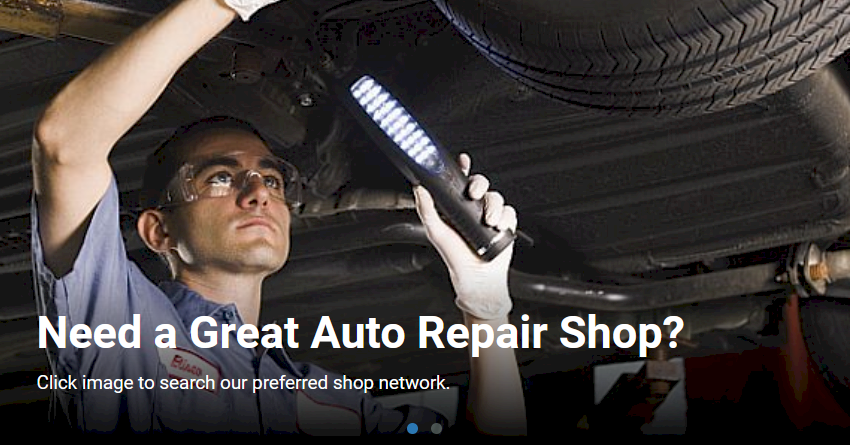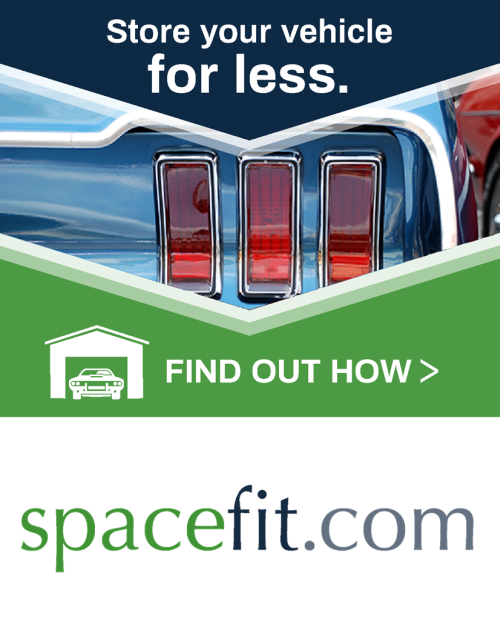In terms of the effect on the car market, though there are one-tenth as many cars in service, they will be refreshed by their owners 10 times as often, implying that new vehicle sales volumes will be unaffected by the introduction of ride-sharing. Since the demand for vehicle depreciation units is the same under both scenarios, and since vehicles are assumed homogeneous with a fixed supply curve, prices of vehicles should likewise be unaffected. Having fewer cars on the road does not necessarily imply that there will be fewer car sales.
This very simple framework gives us a starting point for some more interesting analysis. We will consider the impact of ride-share on the markets for new versus used cars. Most of the analysis will assume that ride-sharing will grow to dominate the market for private modes of transportation, though this outcome is far from certain. The effect of driverless vehicle technology will also be considered, though much of the analysis will assume a driverless future.
Effect on the New Car Industry
Many commentators focus on the notion that ride-sharing will lead to a reduced number of cars in use and immediately jump to the conclusion that ride-sharing will negatively impact vehicle manufacturers. As the description of our baseline model points out, however, perhaps they need not worry.
First, let’s consider the impact of relaxing the assumption of vehicle homogeneity; we will instead assume that technological advances in car design are continually being made. One implication of this new assumption is that vehicles will not only suffer from physical depreciation but will also face obsolescence. In this situation, a car that has yet to reach its terminal number of depreciation units may be scrapped simply because more technologically advanced cars are available for consumers to drive (or, indeed, to ride in).
Manufacturers benefit from the inevitable obsolescence of the vehicles they produce. If vehicle technology did not advance, manufacturers would move more units by offering unreliable vehicles with a short lifespan. Carmakers engage in research and development specifically to entice owners to trade up to newer, safer, more reliable models with more creature comforts. Buyers expecting to own their vehicles for many years will be willing to pay a premium for cars that precisely match their anticipated needs.
The fact that non-ride-share cars are owned for longer in our model means that obsolescence is a bigger issue for them. If all cars on the road were ride-shares – driven heavily in service of their customers – far fewer vehicles would be replaced due to obsolescence prior to the exhaustion of the vehicles’ physical life. This means that for a given number of passenger miles traveled, there will be fewer vehicle sales, relative to the status quo, as a result of the introduction of ride-sharing.
Ride-share owners will demand reliable vehicles but will be largely indifferent to features that will not stand the test of time or that would not be valued by the bulk of their clientele. Ride-shares, like traditional taxis, should be clean and safe, but other features will be largely irrelevant; when was the last time you waved off a cab because it happened to be a 2003 Ford Taurus? Manufacturers currently have little interest in building only bulletproof, homogeneous cars (like taxis) that owners drive until salvage and never want to trade. Commoditization, simply put, would be an existential threat for the car industry as we know it today.
Companies like Uber and Lyft, though, have a strong interest in securing access to such vehicles. Our bold prediction is that if ride-sharing companies become truly huge, they will seek to buy vehicle manufacturers and shift research and development efforts firmly in the direction of cost reduction and reliability.
The next assumption to relax in our model is the fixed number of passenger miles. In reality, ride-sharing services are able to draw people away from public transportation and into private automobiles. I know from personal experience that if I am in downtown Manhattan with my wife and two kids, looking to get to Central Park, it’s cheaper and more convenient to book a ride-share than to catch the subway. I am certain that similar comparisons are being made across the city, country, and world.
For illustrative purposes, let’s assume that prior to the introduction of ride-sharing, half of all journeys were made by private vehicles and half were made using public transportation. As the new industry grows, some journeys via either of these two methods will transfer to this new service. Assuming riders are indifferent between the three options, each will grab one-third of all journeys once the market for ride-sharing fully matures. Note that because both private vehicles and ride-shares use passenger cars, we now have two-thirds of all journeys occurring in such vehicles.
It’s hard to guess the exact way the industry will evolve. The existence of ride-sharing may prompt people to ditch their cars, providing a boost for both public transit and private ride-shares. I suspect, though, that ride-share companies compete more directly with buses and trains (not to mention traditional taxis). It is reasonable, however, to infer that Uber-style services will increase the total proportion of all journeys taken while seated in something resembling a car.
In addition to this line of thinking, there is the potential that ride-sharing will increase the total number of journeys undertaken. It’s easy to imagine people within our society for whom taxis are too expensive, buses too dirty and crowded, and private vehicles too costly to maintain. If services like Lyft – cheaper than a taxi while retaining the comfort of a private vehicle – can induce infrequent consumers of transportation to expand their usage, there is no reason the total market for transportation services cannot expand.
In conclusion, therefore, insofar as the new car industry is in the business of selling homogeneous units of vehicle depreciation, it should do just fine as ride-sharing services diffuse into our daily lives. I would be surprised, though, if the industry viewed itself in this light. Because ride-share passengers will under-value any investment made by vehicle owners in bells and whistles (like sport suspension or entertainment option packages), cars will be far more homogeneous in a world dominated by ride-sharing.
If this happens, the industry will be unrecognizable. In new car markets, manufacturers will have a greatly diminished scope to reap monopoly profits by offering differentiated products to niche purchasers. It makes more sense to imagine a world where companies like Toyota and Uber (dare I suggest the name Tuber?) become a single entity.
Used Cars
We now introduce a secondary used vehicle market to our base model; we are, by necessity, also dropping a number of our assumptions of homogeneity. The used car industry exists, after all, mainly because of heterogeneity among consumers and vehicles.
To elaborate, some people have a preference for, and capacity to purchase, new cars, though they only remain new for an infinitesimally short period of time. Others are either content or forced by financial circumstance to only consider used vehicles. Consumers also have shifting preferences – a coupe may be a great choice for a college student but completely impractical for a young family. It therefore makes sense for vehicles to be passed between a variety of owners before they are eventually scrapped. The used car industry thrives by acting as a go-between – implicitly matching sellers with buyers – for an appropriate fee.
Let’s consider for a moment the fate of one car in particular. I recently met a full-time Uber driver in Dallas who had 140,000 miles clocked on his 2014 Kia Sorento. The vehicle was in great condition and very well-maintained. If the car’s owner continues to drive at the current rate for another five years, the car will then have been driven more than half a million miles. While an eight-year-old Sorento with 80,000 miles will most likely find a new owner, a similar vintage vehicle that has driven a distance equal to a round-trip journey to the moon may not be able to find a buyer.
A logical conclusion to this analysis is that if ride-sharing eventually dominates the market for private transportation, cars will, on average, pass through far fewer owners during their usable lifespans. Indeed, in such a world, I see no plausible situation where a drivable car would be sold to another party. The net result is a lower volume of used vehicle transactions and thus a significantly smaller used vehicle industry overall.
The fact that ride-share vehicles are likely to be more homogeneous also impacts the used car industry. At present, Uber differentiates somewhat by size (UberXL) and quality (UberBLACK) but is generally ambivalent between cars with the same basic configuration. When choosing Uber, the coupe-owning college student will typically not forgo the five-mile ride to campus because a Nissan Pathfinder arrives. The young family may need something broadly resembling a Pathfinder – so the professional ride-share driver (or whoever owns the driverless Pathfinder) will simply avoid buying the coupe in the first place.
In the short run, ride-share drivers will give a tremendous boost to the used car industry. A lightly used two-year-old certified pre-owned (CPO) vehicle, traded due to obsolescence or changing consumer taste, would be a great option for someone looking to drive ride-shares for a living. With 100% ride-share penetration, however, CPO will come to have a new meaning: ClaPped Out!
Self-Driving Cars
Let’s assume for a moment that self-driving cars are introduced into a world where ride-sharing does not and cannot exist. Would we expect any disruption to the auto industry? Bear in mind that self-driving technologies have been gradually introduced to cars over the past century or more. Automatic transmission, for example, is a self-driving technology that first entered the market in the 1930s. Instead of depressing the clutch and changing gears, the car magically does the job for you. Other examples are cruise control, on-board computers, back-up cameras, GPS, and parking assist features, all of which have diffused into the car industry without creating an existential threat. Any labor-saving device could be viewed as an incremental shift in the direction of self-driving cars. It’s just that these days, the technologies are freeing the “driver” from taking any action besides choosing the destination.
If self-driving cars become widely available, and “driving” habits do not change, they will have precisely zero impact on the passenger vehicle industry. Self-driving cars will still depreciate, need repairs, be status symbols, and be upgraded every so often by owners as new features are introduced. However, depreciation rates may decline somewhat, especially if cars can be programmed to take themselves in for an oil change at 2 am on the third Wednesday of each quarter.
If self-driving cars become widely available, and “driving” habits do not change, they will have precisely zero impact on the passenger vehicle industry.
Ride-sharing holds a much greater potential to disrupt the auto industry. If driverless technology accelerates the diffusion of ride-sharing, which seems likely, many will point to autonomous cars as the downfall of the erstwhile auto industry. In our view, though, while driverless technology will definitely ravish the labor market – all driving-related jobs are at risk from the technology – ride-shares will be the prime culprit should the auto industry fall into decline.
Conclusion
My 11-year-old son recently told me he was concerned by the introduction of self-driving cars. He’s not worried about HAL refusing to open the pod bay doors; he just wants to learn how to drive the old-fashioned way. I told him to relax. As Bill Gates says, we tend to overestimate the change that will occur in the next two years and underestimate the change that will occur in the next 10. I suspect that my boy will learn to drive, and hopefully enjoy it as much as I do, and that ride-shares and driverless technology will make life better for him and his contemporaries in their 20s and beyond.
After all, some people (myself included) enjoy driving and will continue to demand old-style cars even after self-driving technology is perfected. Even the keenest driver will, however, appreciate a cheap ride-share after having a few too many glasses of wine or when avoiding paying for parking at the airport. Cars with manual gearboxes and steering wheels will be privately owned even in the steady state. The utility of ride-shares using autonomous vehicles, however, should be obvious and will undoubtedly capture a slice of the transportation market during the next decade.
If this slice is substantial, car production will shift toward more homogeneous vehicles that meet the needs of the highest proportion of riders at the lowest total cost. While enthusiasts will continue to buy Mazda Miatas, Jeeps, and BMW M3s, the standard ride-share will more closely resemble the autonomous form of a Kia Sorento or Dodge Caravan.
It is this commoditization that constitutes the biggest threat to the auto industry. At present, carmakers seek to produce niche products in order to attract loyal, repeat customers. If vehicles are used by customers in half-hour chunks, there is no room for loyalty.
Carmakers will instead be providing a vital commodity and will likely be regulated accordingly.


























